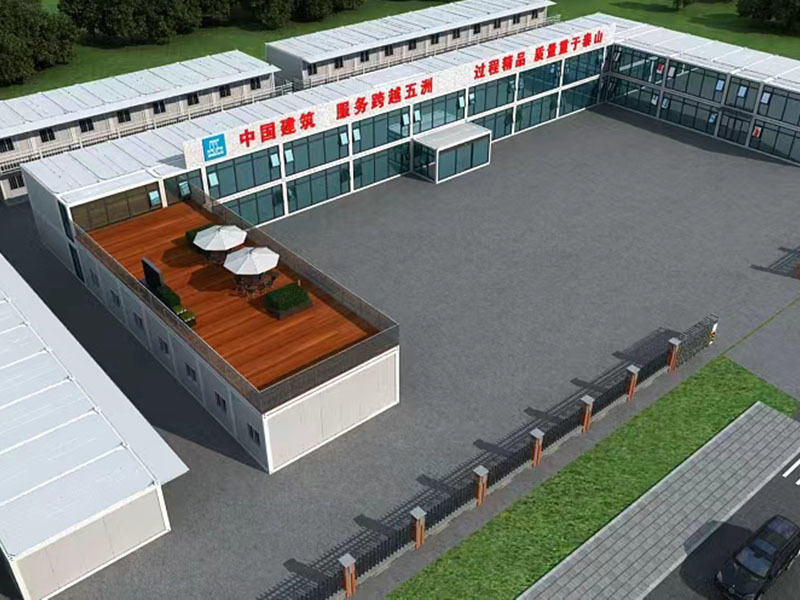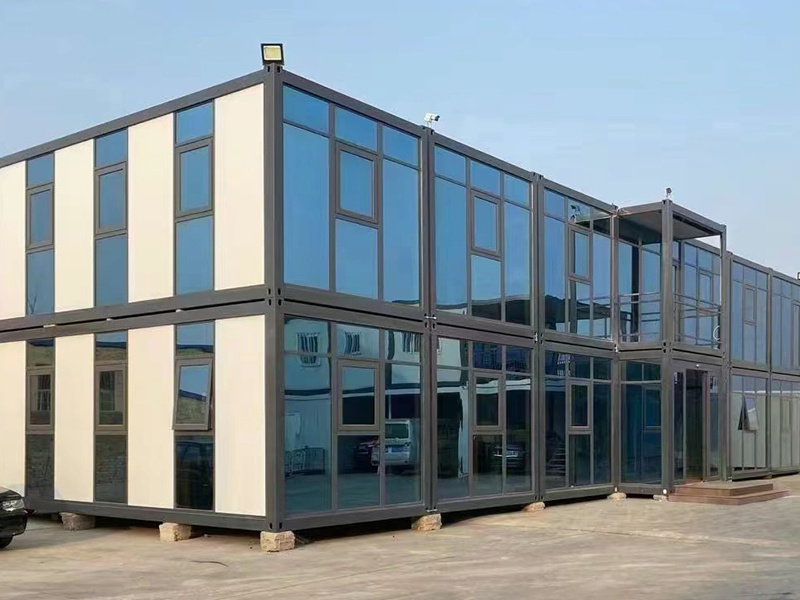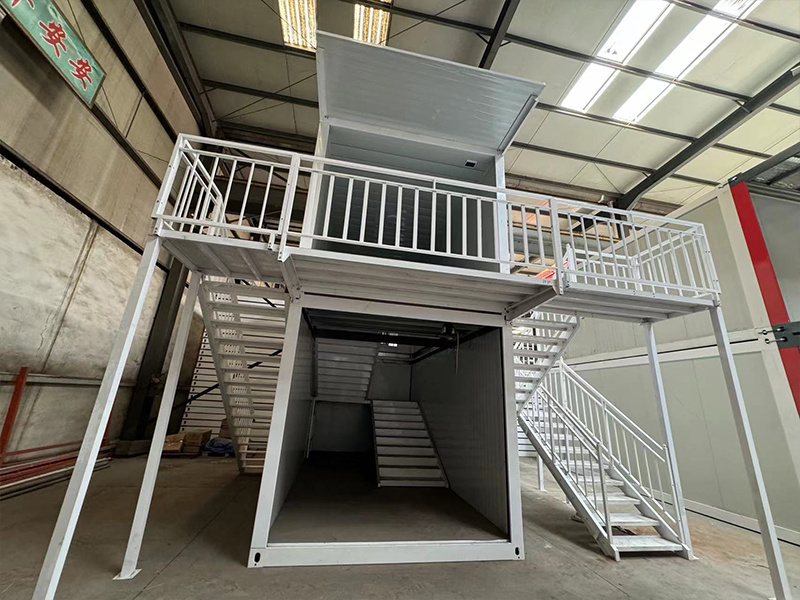How Temporary Building Structures Support Eco-Friendly Practices in Modern Construction
Release Time:
May 25,2025
How Temporary Building Structures Support Eco-Friendly Practices in Modern Construction Table of Contents - Introduction to Temporary Building Structures - Eco-Friendly Advantages of Temporary Structures - 1. Sustainable Materials Used in Temporary Structures - 2. Energy Efficiency in Temporary Buildings - Waste Reduction Practices in Temporary Structures - Reusability and Dura
How Temporary Building Structures Support Eco-Friendly Practices in Modern Construction
Table of Contents
- Introduction to Temporary Building Structures
- Eco-Friendly Advantages of Temporary Structures
- 1. Sustainable Materials Used in Temporary Structures
- 2. Energy Efficiency in Temporary Buildings
- Waste Reduction Practices in Temporary Structures
- Reusability and Durability of Temporary Building Materials
- Case Studies: Successful Implementation of Temporary Structures
- Future Trends in Temporary Building Structures
- Conclusion
- Frequently Asked Questions
Introduction to Temporary Building Structures
Temporary building structures are gaining popularity in the construction industry, particularly for their potential to support eco-friendly practices. These structures, often utilized for short-term projects like events, festivals, or emergency housing, are designed to minimize environmental impact. By leveraging innovative materials and construction techniques, temporary buildings can significantly contribute to sustainable development goals. This article examines how temporary structures are not just practical solutions but integral components of an environmentally conscious approach to building.
Eco-Friendly Advantages of Temporary Structures
Temporary building structures offer numerous eco-friendly advantages that help mitigate the environmental footprint of the construction sector. By focusing on sustainable materials, energy efficiency, and waste management, these structures set a new standard for eco-conscious design.
1. Sustainable Materials Used in Temporary Structures
The use of **sustainable materials** is a hallmark of eco-friendly temporary buildings. Many companies are now opting for materials that are renewable, recyclable, or have a lower carbon footprint. For instance, structures made from bamboo, recycled metal, or reclaimed wood not only reduce the demand for new resources but also promote the circular economy.
Additionally, many temporary structures utilize prefabricated components. These parts can be manufactured in controlled environments, minimizing waste and energy consumption. By assembling structures on-site from these prefabricated elements, builders can ensure efficiency and sustainability.
2. Energy Efficiency in Temporary Buildings
Energy efficiency is another critical factor in promoting eco-friendly practices through temporary building structures. Many temporary buildings are designed with features that enhance energy conservation. This includes the use of **insulation** materials that reduce heating and cooling demands.
Modern temporary structures often incorporate **renewable energy sources** such as solar panels or wind turbines, allowing them to operate off the grid. This not only reduces reliance on fossil fuels but also encourages the use of clean energy in construction, significantly lowering overall emissions.
Waste Reduction Practices in Temporary Structures
One of the most significant benefits of temporary building structures is their potential for **waste reduction**. Traditional construction methods often lead to significant waste generation, with a large percentage of materials ending up in landfills. In contrast, temporary structures are designed with disassembly and reusability in mind.
Construction companies adopting temporary structures tend to implement rigorous waste management strategies. This includes recycling materials on-site and donating usable items to charities or organizations in need. By focusing on minimizing waste, the construction industry can contribute to a more sustainable future.
Reusability and Durability of Temporary Building Materials
The **reusability** of temporary building materials is a key aspect of their eco-friendly nature. Structures that are designed for easy disassembly can be reused for multiple projects, thereby extending the lifecycle of the materials used. This not only reduces the need for new resources but also minimizes waste.
Durability plays a pivotal role in the sustainability of temporary structures. High-quality materials that withstand the elements can be reused multiple times, making them a cost-effective and environmentally friendly option. This approach fosters a mindset of responsible consumption within the construction industry.
Case Studies: Successful Implementation of Temporary Structures
Examining real-world applications of temporary building structures illustrates their potential to support eco-friendly practices.
**1. Pop-Up Markets:** Many cities have adopted temporary markets using modular structures that can be quickly assembled and disassembled. These markets often utilize **recycled materials** and provide a platform for local vendors while minimizing environmental impact.
**2. Emergency Housing Solutions:** Following natural disasters, temporary structures can be rapidly deployed to provide housing for displaced individuals. These modular units are often built using sustainable materials and are designed for easy transport and reusability.
**3. Festival Venues:** Events like music festivals frequently employ temporary structures to create stages and hospitality areas. These venues are constructed using lightweight, recyclable materials and are dismantled after the event, reducing long-term environmental effects.
Future Trends in Temporary Building Structures
As the construction industry evolves, the future of temporary building structures is poised to embrace even more sustainable innovations. Anticipated trends include:
- **Smart Technology Integration:** Incorporating IoT (Internet of Things) technology for enhanced energy management and optimized resource usage.
- **Green Certifications:** More temporary structures are expected to pursue certifications such as LEED (Leadership in Energy and Environmental Design), showcasing their commitment to sustainability.
- **Biodegradable Materials:** The development of biodegradable construction materials will further reduce the environmental impact of temporary structures, contributing to waste reduction efforts.
Conclusion
Temporary building structures represent a transformative approach to construction that aligns with eco-friendly practices. By utilizing sustainable materials, enhancing energy efficiency, and prioritizing waste reduction, these structures support the industry's move toward a greener future. As we progress in our commitment to sustainability, embracing the benefits of temporary buildings will be crucial in minimizing environmental impact while meeting the demands of modern society.
Frequently Asked Questions
**1. What are temporary building structures?**
Temporary building structures are short-term constructions designed for specific events or purposes, often made from materials that are easily assembled and disassembled.
**2. How do temporary structures contribute to sustainability?**
They utilize sustainable materials, enhance energy efficiency, and promote waste reduction, which collectively minimizes the environmental impact of construction.
**3. Can temporary buildings be reused?**
Yes, temporary buildings are designed for reuse, allowing materials and components to be disassembled and utilized for future projects.
**4. What types of materials are commonly used in temporary structures?**
Common materials include bamboo, recycled metals, prefabricated components, and other sustainable resources.
**5. How are temporary structures being used in disaster relief?**
Temporary structures can be quickly deployed as emergency housing solutions following natural disasters, providing immediate shelter for affected individuals.
Key words:
What Else Might You Learn?










